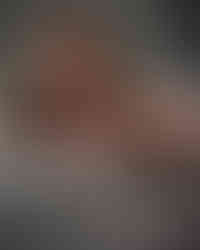Capturing Souls: Adriana Rudnichenko's Journey Through Vulnerability and Connection in Portraiture
- MALVIE Magazine
- Jan 14, 2024
- 3 min read
Updated: Feb 24, 2024

Can you elaborate on how your personal struggles with separating yourself from others have influenced your approach to portraiture?
That happened naturally. It’s almost like I’m lacking a skin barrier, so than it becomes harder to establish a limit between myself and others. I think that vulnerability helps to build trust between me and my sitter. With that, it gets more comfortable for both of us to do the photographs.
How has difficulty in navigating relationships and experiencing anxiety and disorientation shaped your artistic journey and the themes in your work?
Honestly, it wasn’t easy, struggling with mental health issues and working on my career. It took me a while to feel comfortable in my skin enough that I could actually work functionally the way I am now. That’s probably the downside of it all. On the other hand, I feel like when I started working with my hyper sensitivity, rather than against it, I found my voice. There is a fantasy world inside my head, some sort of wonderland, that brings me calm, and that’s sort of what I try to bring to life visually: this sense of comfort in silence, aloneness. All with a touch of bucolism, which comes probably from my childhood memories.
You mentioned feeling empathetic and vulnerable when merging your identity with the people you photograph. Could you delve deeper into how these emotions contribute to the essence of your portraits?
Something I keep hearing from my sitters is that I make them feel very comfortable and safe during the photo sessions. And I would attribute this to that. By being vulnerable and empathetic, I get that in return. And to me, that’s what makes my portraits more powerful. The feelings that are shown.
Why do you consider the medium format film camera essential to your process? How does it contribute to the unique connection you seek in your portraits?
By using that specific gear, I get to slow down, which helps my brain to slow down and actually pay attention to the human in front of me rather than just the image I’m taking from them. By having to get the right picture instead of trying a bunch of them out, I also engage more with the model and ask of them a more collaborative approach. This elevates the connection as well.
You mentioned that the connection only happens when the process is slowed down. Could you explain why slowing down is crucial and how it impacts both your creative process and the resulting images?
When we slow down, we allow time and space to actually have a connection. I feel that connection is crucial to the result.
How does the need for precise composition contribute to the overall storytelling in your portraits? What role does composition play in conveying the intended emotions?
I pay a lot of attention to the body gestures. They tell stories. And they are very particular to each person, which creates this uniqueness to the specific human being that's sitting in front of me. The vantage point as well, will bring a certain feeling and mood to it.
In what ways does inserting the challenge of using a medium format film camera force you to be present in the moment and engage more deeply with your subjects?
First of all, it’s that idea of having to collaborate together to make sure we are getting the right picture, because we cannot see the results right away, and we do not have so many trials as well: I usually take more than 30 pictures, so we need to work together to make that frame work. And by not being able to see the results right away, somehow it creates a sort of relaxation from the model. It also builds trust.
You described the moment of the shutter being pressed as fragile. How does this fragility influence the dynamics between you and your subjects during a photoshoot?
It is fragile because it deals with chance and timing, and you can’t go back. That leads us both to more presence and focus.
How do you navigate the collaborative process with your subjects to ensure that both of you achieve the desired outcome in creating the "right image"?
I think that all of that connection that happens also happens in a really particular way for each person. And by creating this environment that allows for vulnerability to arise, we both, in some sort of magical way, get in terms of what works for both of us.
Photographer: Victoria Manzoli @victoriamanzoli
Model: Adriana Rudnichenko @adrianaleiva99
















Comments